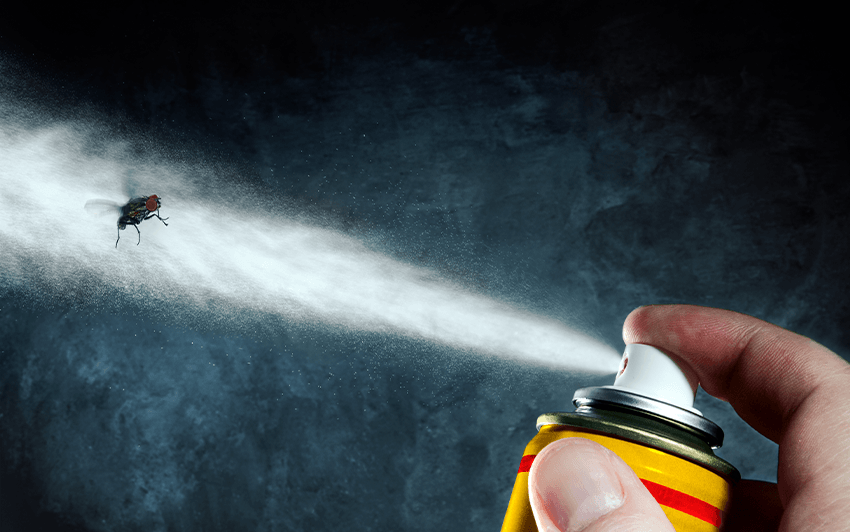
The Most Common Types of Indoor Air Pollutants
With International Earth Day coming up on April 22, it’s our duty to put in some extra effort into taking care of the planet. However, as with many things, it all starts at home. Being aware of common indoor air pollutants is the first step to a cleaner and more healthy home.
In this complete list, we cover the different types of indoor air pollution and what steps you can take to improve your indoor air quality.
Bacteria and Viruses
Bacteria and viruses are often mentioned together since they are both microscopic pathogens that cause unique symptoms. Each type of bacteria or virus also has a mode of transmission which could be via close contact, respiratory droplets, food, insects, and so on.
The most notorious indoor air pollutants are bacteria and viruses that are transmitted through the air, typically after an infected person sneezes or coughs. A few examples include the following:
-
Influenza viruses A, B, H1N1
-
Measles and mumps
-
Viral meningitis
Mold
Mold is a type of fungi that can grow on walls and ceilings. This is one of the most common indoor air pollutants that homeowners struggle with. Mold produces allergens that can cause symptoms like red eyes, rash, runny nose, sneezing, and even asthma.
Excess Moisture
Excess moisture in your home’s air can cause a proliferation of bacteria and mold. This is because both of these types of indoor air pollutants need moisture to grow. For this reason, excess moisture in the air is also counted as one of the indoor air pollutants that homeowners need to watch out for.
However, excessively dry air also causes its own set of health problems. Therefore, aiming for indoor air humidity within the range of 30 to 50% is ideal.
Pet Dander
Pet dander and tiny hairs from pets can be inhaled and travel into in the lungs, causing health problems. It could even go as far as inflaming the lining of the lungs and scarring the airways.
Dust
Next on our list of common indoor air pollutants is dust. Though dust looks like a homogeneous substance, it is often the combination of dirt and dead skin cells, but can also include ash from your wood-burning fireplace. Due to the small size of dust particles, they can be inhaled, thus causing allergic reactions.
VOCs
VOCs (volatile organic compounds) are present in almost everything brought into the home. These harmful chemicals are emitted from many different sources and are up to 10 times more dangerous indoors, especially for children. Some common VOCs include:
-
Acetone - Found in nail polish remover, furniture polish, and wallpaper.
-
Benzene - Found in paint, glue, carpeting, and emissions from gasoline combustion.
-
Butanal - Found in barbecue emissions, burning candles, stoves, and cigarettes.
-
Carbon Disulfide - Found in chlorinated tap water
The best way to avoid VOCs in the home is by storing these chemicals in the garage or an outdoor shed. If you need to use a product that contains VOCs, having an air filtration system or HVAC filter will help in reducing the number of pollutants in the air, thereby decreasing your consumption.
Pollen
Pollen comes from plants, trees, and grass and is usually carried indoors when the windows are open during allergy season. Pollen can cause symptoms like congested nasal passages, sneezing, and itchy eyes.
Wood Smoke
Though the appearance of an old wood-burning fireplace is cozy, wood smoke from this type of fireplace is included in this list of harmful indoor air pollutants. This is because regularly inhaling wood smoke can cause lung and heart problems.
Cigarette Smoke
Cigarette smoking by itself is dangerous to one’s health. The smoke emitted from smoking cigarettes is one of the many types of indoor air pollutants that homeowners need to be aware of. It settles on soft surfaces and infuses into them; it also fills and clogs air filters in the furnace increasing the frequency of changing the filters. Tar from residue also stains walls and coats the inside of ducts.
Pesticides
The purpose of pesticides is to protect the home from insects, pests, microbes, termites, and rodents. This makes them toxic by nature.
It is possible to develop many short-term and long-term side effects from pesticide exposure. A few issues that could arise from pesticide exposure include eye irritation, skin irritation, respiratory problems, increased risk of cancer, and so on.
Asbestos
Asbestos was used in home construction up to the early 1980s. This means that homes constructed around this timeframe or earlier may have asbestos-containing components.
As one of the most harmful indoor air pollutants, asbestos can cause symptoms such as the following:
-
Frequent dry cough
-
Chest tightness or pain
-
A crackling sound while breathing in
-
Weight loss or loss of appetite
Formaldehyde
Formaldehyde is present in products like resins, insulation materials, paints, glues, and pesticides. It is also one of the types of indoor air pollutants that can cause devastating damage. Long-term exposure to formaldehyde can cause cancer. However, short-term exposure can also irritate the skin, eyes, nose, and throat.
Carbon Monoxide
Next on this list of different types of indoor air pollutants is carbon monoxide (CO). This odorless gas is produced when a material or fuel burns. This means that homes with poorly designed or inadequately maintained fuel-burning appliances (e.g. furnaces, water heaters) are at risk of having elevated levels of carbon monoxide. When inhaled in large amounts, CO can lead to dizziness, unconsciousness, tissue damage, and death.
Nitrogen Dioxide
Similar to carbon monoxide, nitrogen dioxide (NO2) is emitted when fuel is burned. This means that water heaters, gas and wood fireplaces, furnaces, and the like can release nitrogen dioxide into your indoor space if not properly maintained.
Nitrogen dioxide, as an indoor air pollutant, can aggravate existing respiratory diseases. Over time, exposure to this gas can also make someone vulnerable to respiratory infections.
Radon
Last on this list of common indoor air pollutants is radon. Among the types of indoor air pollutants that we discussed, this is one of the few that is naturally occurring. Radon is also one of the trickiest to avoid.
Radon can enter a home through cracks in the foundation, floor, and window holes. Radon moves up through the ground, enters the cracks, and then builds up inside the enclosed space of the house. The main risk associated with radon exposure is an increased susceptibility to lung cancer.
Improve Your Indoor Air Quality with Napoleon
One of the most effective ways to decrease harmful pollutants in your home is to have an HVAC filter like the MERV 11. This air filter can remove up to 85% of solid indoor air pollutants in your home.
For more products that will improve your home’s comfort and efficiency, check out Napoleon’s HVAC systems today!


